Clarion Marine CMSP speakers and XC amps, premium value?
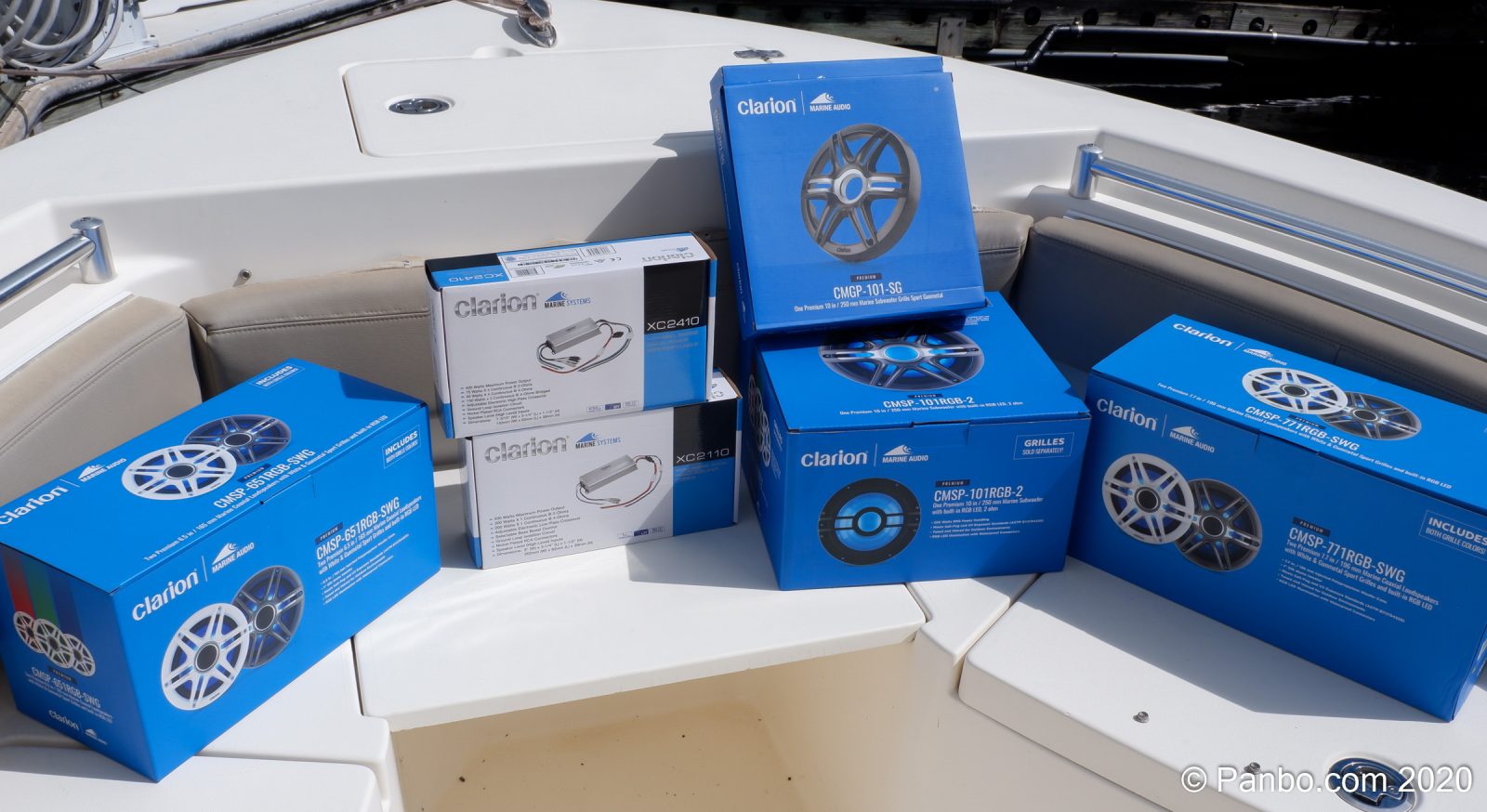
In the early 2000s it seemed like every new boat had a factory-installed Clarion head unit and speakers. The giant double-din XMD3 was standard equipment on my first new boat and several others since. But starting a few years ago, the brand became less visible, to the point that I can’t remember when I last a new production boat install. Well, now Clarion is back with fresh products and assist from new brand owner JL Audio. And I’ve just installed their latest speaker and amp models on Panbo(at) to see how they perform.
In late 2018 JL Audio licensed the Clarion name for marine use, and then hired a dedicated management and engineering staff to design fresh Clarion Marine products. The CMSP line of speakers I installed on Panbo(at) was designed by this new team. The arrangement allows JL to compete in the value side of the market while using a familiar brand name, but not their own.
For 2020 Clarion is offering CMS and CMSP speaker lines with the P in CMSP indicating premium. The 6.5-inch CMS speakers are designed to handle 30 watts RMS and the 6.5-inch CMSP speakers are designed to handle 50 watts RMS. The CMSP speakers feature larger tweeters and better materials for the drivers. Clarion recommends the CMS speakers for systems where the speakers are driven by the head-unit and the CMSP for systems making use of external amplifiers. When compared to many speakers out there I’m not sure that a speaker line that tops out at $240 a pair is premium but I suppose Clarion is just comparing to the rest of their line.
Clarion sent me a pair of 6.5-inch CMSP-651RGB-SWG speakers ($200 list), a pair of 7.7-inch CMSP-771RGB-SWG speakers ($240 list), a CMSP-101RGB-2 10-inch, 2-ohm subwoofer ($180 list), an XC2410 4-channel, 50-watt per channel amplifier ($170 list), and an XC2110 single-channel, 200-watt subwoofer amplifier ($200 list). This is a complete, four-speaker plus a subwoofer, externally amplified stereo package for $1,000 list price. That’s a very solid value but we haven’t had the chance to hear it yet.
Installation
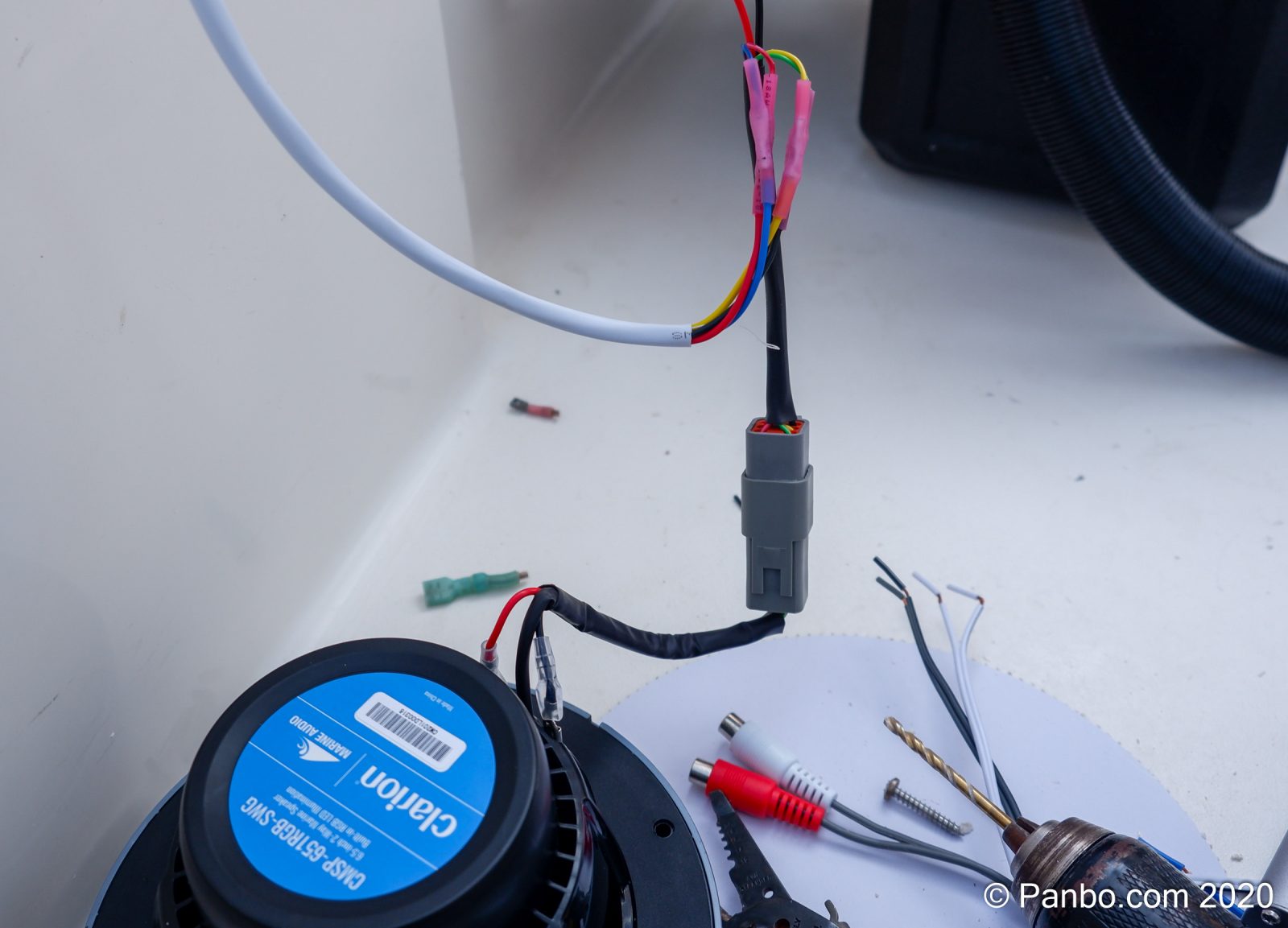
Prior to installing the CMSP speakers Panbo(at) had two pairs of JL Audio M650 speakers (JL’s M-series has been replaced with their M6 speakers). The pair of CMSP-651RGB fit right into the holes left by the M650s –including the screw holes — but the CMSP-771RGB speakers required enlarging the holes. The RGB suffix on the model numbers indicates these speakers include red, green, and blue LED lighting making nearly any color possible when paired with a lighting controller.
Although there are spade style terminals on the speaker, Clarion uses a 6-pin Deutsch connector and includes a mating Deutsch connector with pigtail leads. Six wires are used for the RGB models of the speakers because the speakers themselves require two wires while the lighting requires four. I’m a big fan of the use of connectors in this type of application. I think it’s much easier to make butt splices one time to the pigtail with a Deutsch connector instead of crimping on six spade connectors and then sliding them all on. Deutsch connectors are weather-resistant and in my experience stand up to connecting and disconnecting much better than spade connectors that can loosen up and slip off easily.
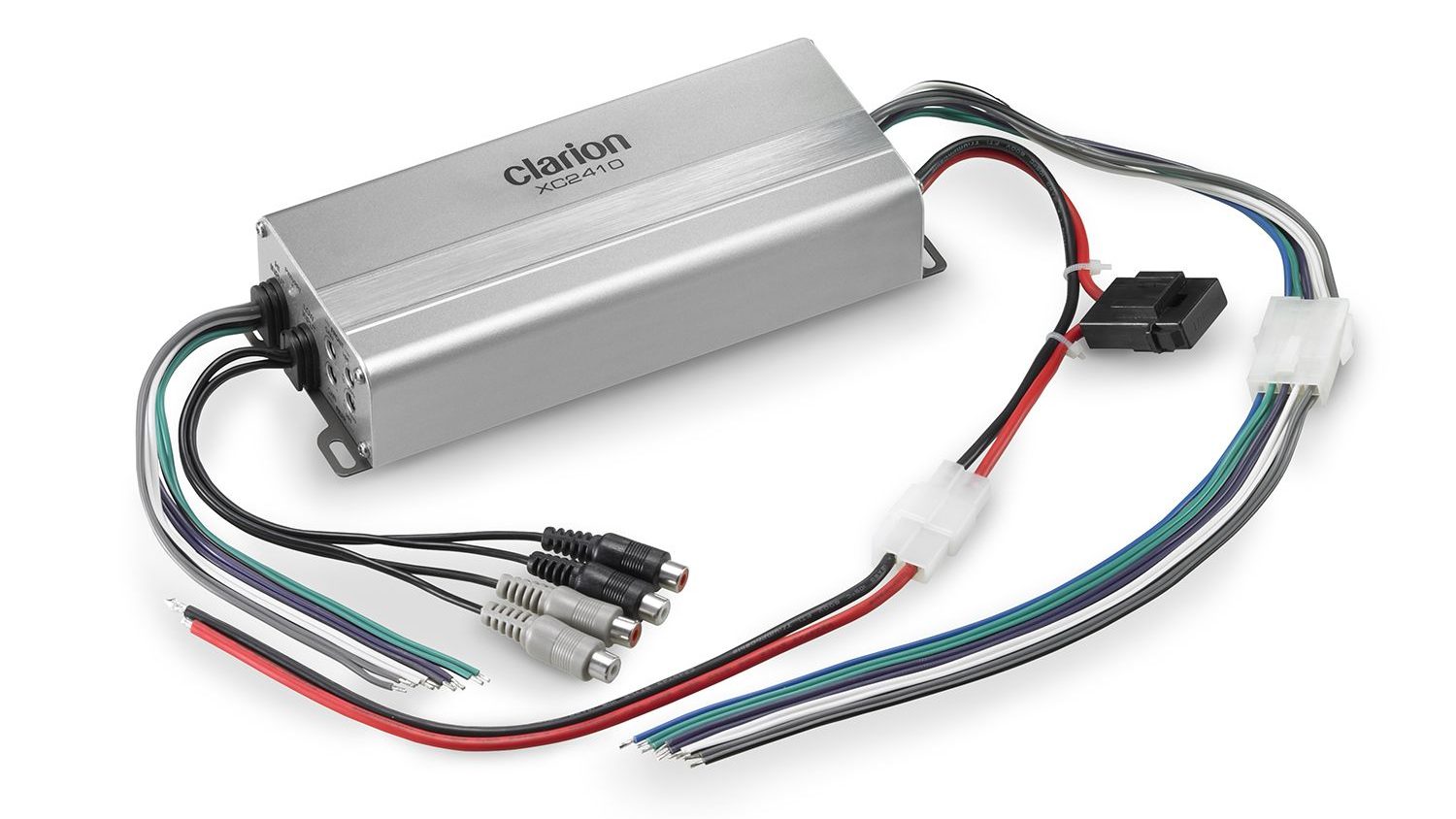
The amplifiers also use detachable harnesses to aid in making your connections. I think this is especially important for amps that are frequently installed in confined spots with limited access to the wiring connections. I’ve donated many screws to bilges while trying to make blind connections so I really appreciate the ease of crimping wires, securing the amp, and plugging in the harness.
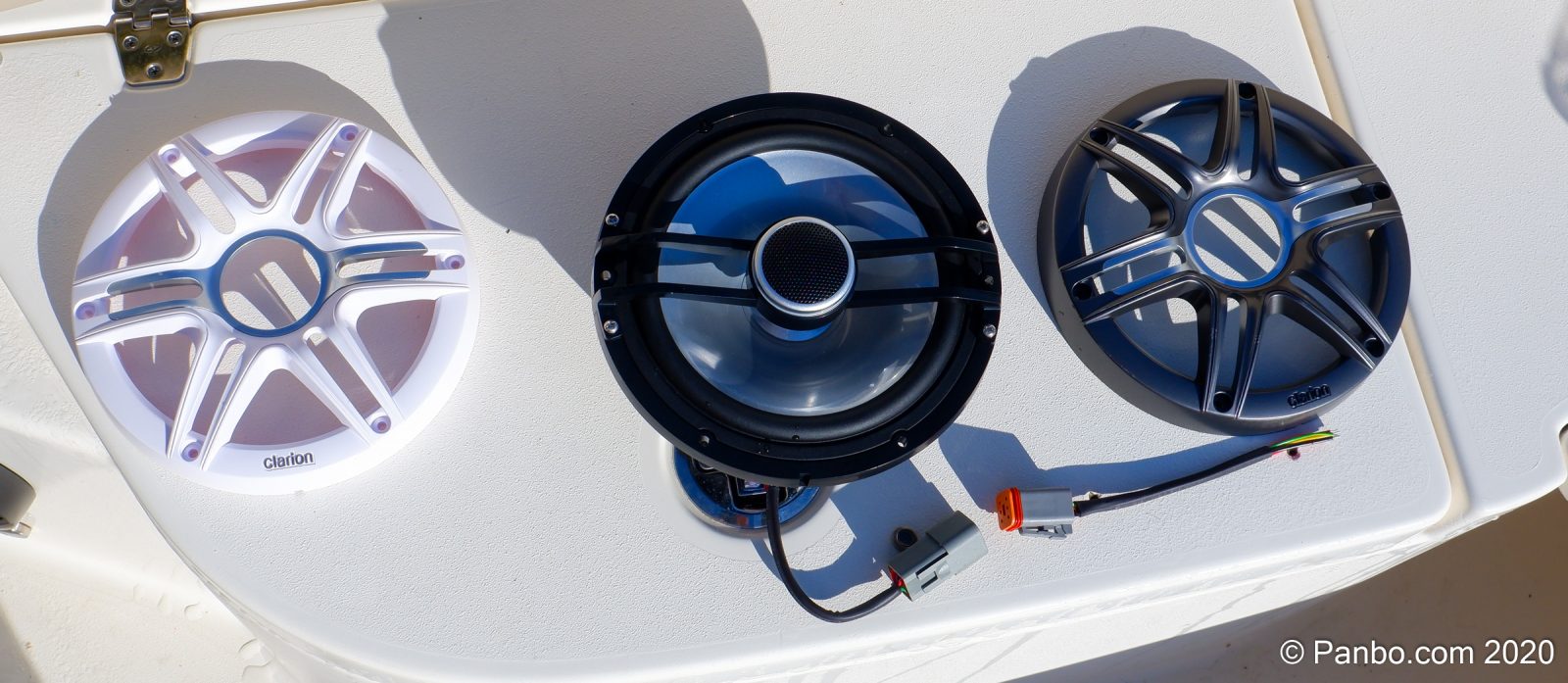
With the 6.5 and 7.7-inch speakers, Clarion includes both white and gun-metal gray grills. The subwoofer comes without a grill so you will purchase your preferred color separately. The grills are easily swapped before installing because they’re held to the speaker by the six screws used to secure the speakers. I opted for the contrasting gunmetal gray and think it forms a nice contrast to the white gel coat of Panbo(at). Although nearly all speaker grills I’ve come across are plastic, these feel like they’re a little more susceptible to damage. But, they’ve been installed on the boat for about a month and thus far still look perfect.
Fixed color red, green, or blue illumination (or any of the colors you can produce by mixing these three colors at full intensity) can be achieved by just connecting a ground and the positive to the desired color leads. But, if you’re after easily controllable full-color spectrum lighting you will need an LED controller. I used one I had around from another manufacturer and it worked perfectly. The illumination is quite bright and fairly even, though not as visually striking as what JL is doing in the M6 line with transreflective lighting behind the cones.
Performance
I feel an obligation to start this section with a disclaimer. I’m an audio snob. When met with the choice to save a few dollars or spend outrageously in order to get the best sound, I always spend outrageously. Which means, I’m really not the target consumer for these speakers. Add to that the fact that I installed this system on a center console that I routinely cruise around at 25 knots and you have a pretty challenging set of circumstances for these speakers and amps. My conclusion is that at lower volumes this system does well, but when pushed hard — like when turned up enough to be able to hear the music well at speed — the sound can become harsh.
Over a decade ago Gizmodo did a story on the difference between a $100 pair of speakers and a $100,000 pair of speakers. The gist of the story is that a lot of things matter but speakers aren’t nearly as easily evaluated by specs, materials, and other purely objective characteristics. There’s a lot that goes into making great speakers and there’s a lot subjective about the sound of one speaker compared to another. In fact, I did some informal (and woefully unscientific) polling between JL M Series and Clarion CMSP speakers. At lower volumes, the results were quite mixed about which speakers were preferred. But with increased speed and volume, most — but not all — listeners quickly appreciated the performance of the JL speakers.
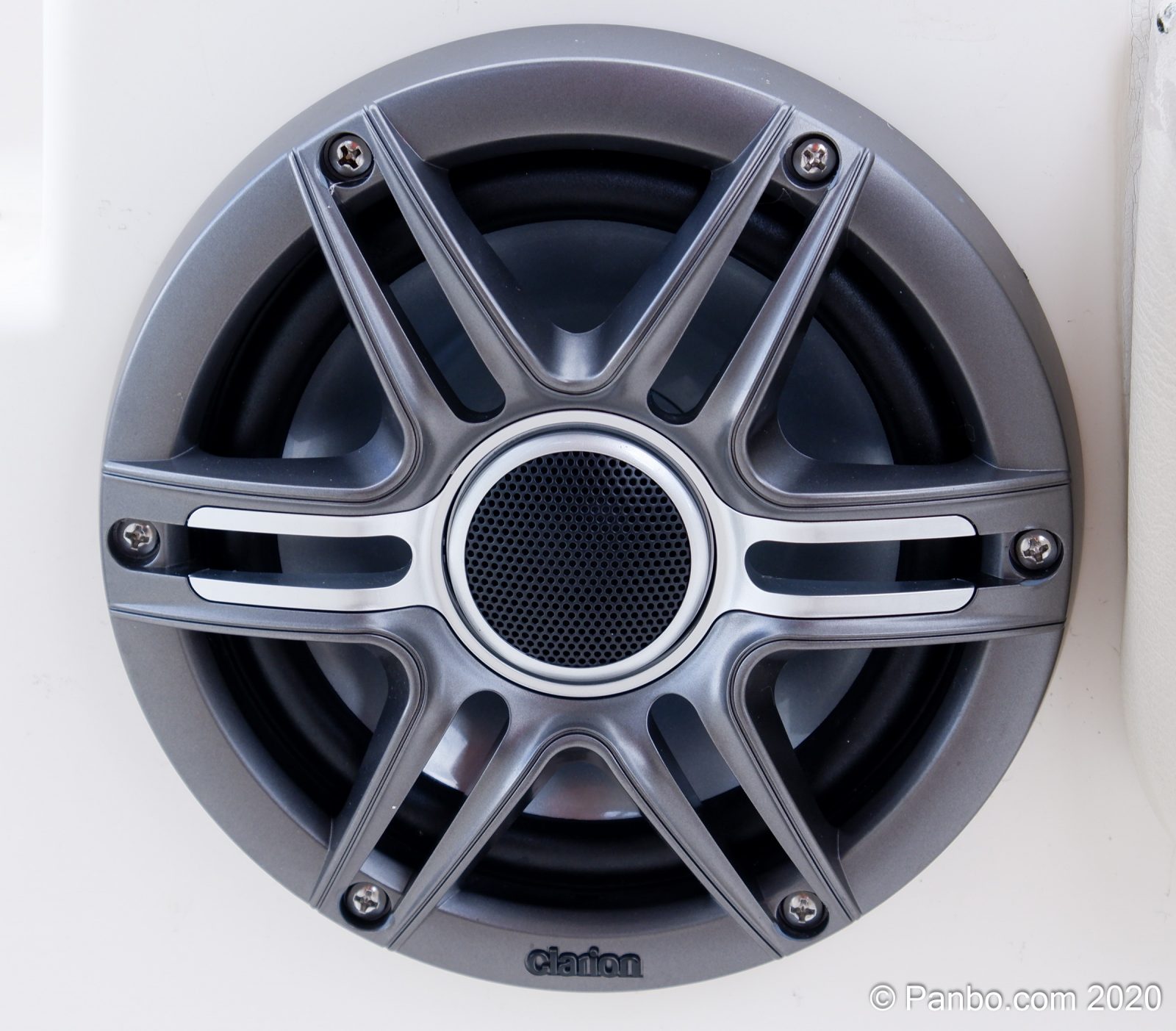
The 6.5-inch and 7.7-inch speakers use silk dome tweeters with neodymium magnets mounted on a bridge over the woofer cone. The woofer cones are injected molded so they should hold up well in the marine environment. Appropriate to their price point, the construction of the speakers is all plastic but the speakers feel sturdy and well made.
The system delivers balanced sound at lower levels with good integration of low, mid-bass, and high frequencies. When not asked to play loudly the sound is pleasant and musical. The infinite baffle — meaning that it doesn’t need to be mounted in an enclosure — subwoofer does a nice job of adding emphasis to the sound, and when properly tuned, doesn’t overwhelm the overall sound. At low to medium volumes, the subwoofer delivers tight bass with good definition. When asked to play louder the bass becomes boomier (is that a word?) and lacks some definition.
When I spoke with a Clarion Marine rep about the sound quality, he reminded me of the environments for which these speakers are designed. These are primarily freshwater, fishing, pontoon, and family boat speakers. Those settings represent different needs and challenges than where I’m using the speakers. At low and moderate volumes the speakers sound good. This system easily outperforms some of the really inexpensive systems I’ve heard and still sounds pretty good at lower speeds when pushed a little. The sound gets less pleasant when the ambient noise level rises and the speakers and amps are pushed to play over a high noise floor. I think it’s here that the value-focused design of these speakers shows its limits.
Final thoughts
After installing and experiencing Clarion’s CMSP speakers and XC series amps, I’m not sure I can get onboard with the premium description, but I do have a better appreciation for what a $1,000 speaker and amp system can deliver. If your needs are for low to moderate sound levels I think you will be very pleased with what Clarion Marine has to offer. But, if your needs include louder environments or really high volume listening I think you will benefit from investing a little more.





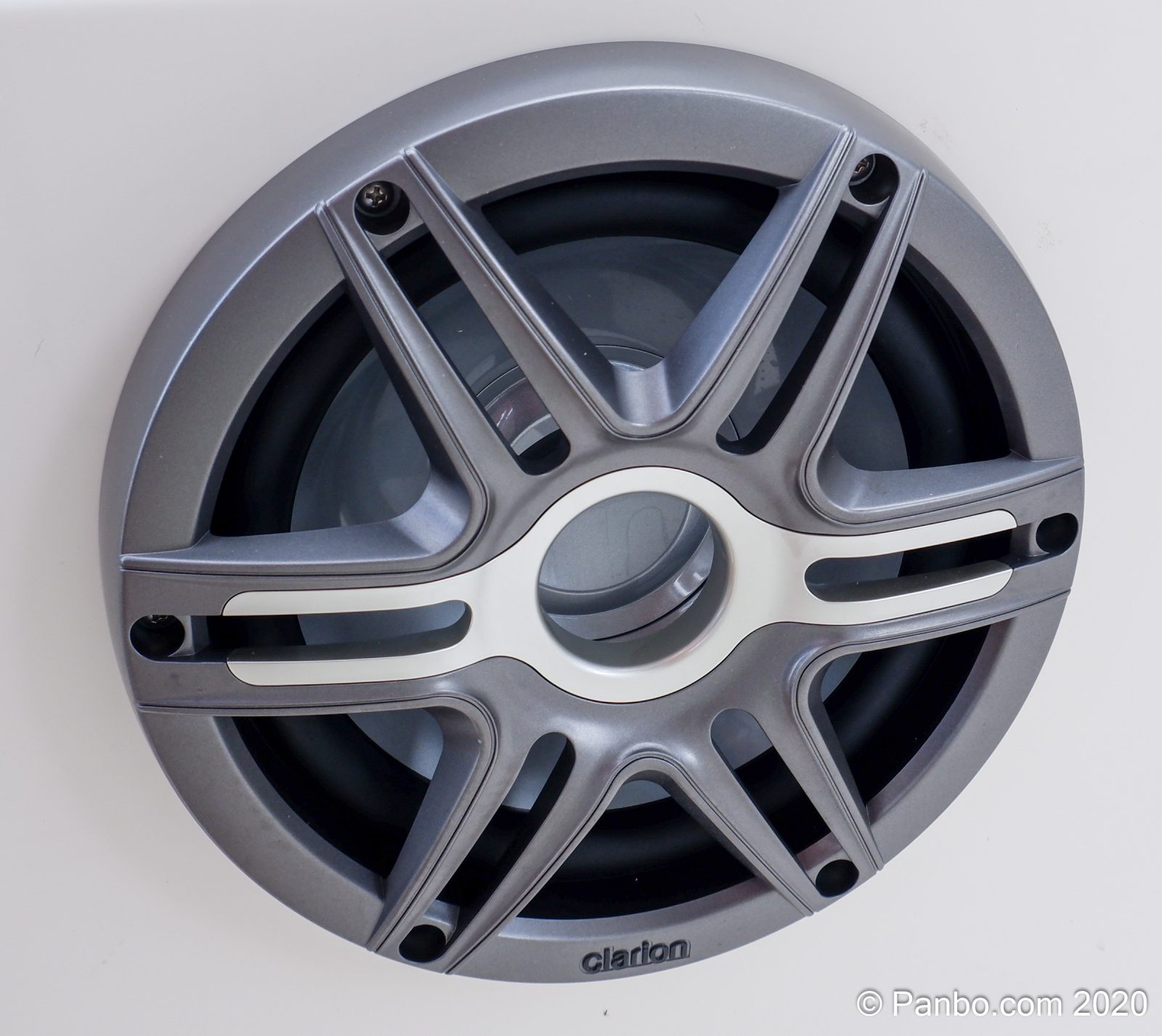
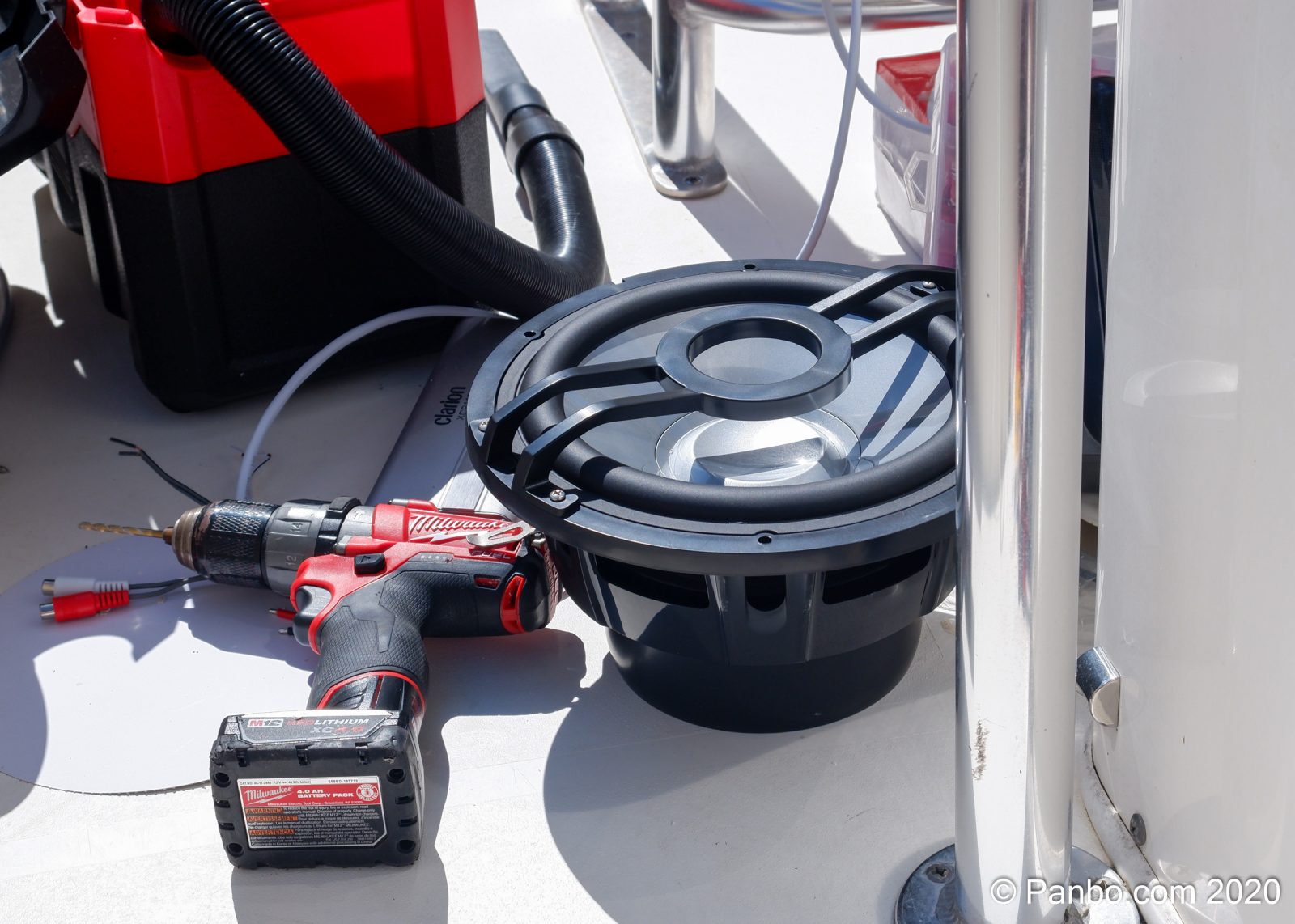











Hi Ben – “really high volume listening” — we generally try to anchor far away from those guys 🙂
Fair enough and well understood. I’m certainly not a fan of shaking the water, so maybe really high volume isn’t quite right. But, on a smaller boat on plane the volumes have to be elevated for the music to be audible. It’s at that level that the difference between Clarion’s value offering and higher end JL and Fusion speakers can be clearly appreciated.
-Ben S.
Smaller boat on plane? How do you plane on a mono-hull sailboat? Haha. I know Hartley is also a sailor, so how would these work on a sailboat?
I was just yanking on Ben’s leash 🙂 I do understand why small open boats need a high-volume stereo if you want to have tunes playing while blasting out to frighten the fishes. We were leaving the Lake Worth entrance one time with a largish sea running in (and an outgoing current, natch!) – and one of THOSE boats went past us with tunes blaring – and when they went off the top of a wave and impacted the next one, the tunes suddenly disappeared. I guess the stereo wasn’t rated for that many G’s of impact.. I noted the crew apparently wasn’t ready for it either, as they were in extensive disarray. Didn’t slow ’em down much, tho.
I bet those speakers would work well at the volume levels found on most sailboats! We have a pair of ancient Bose speakers in our salon, and they still work well.
I always wonder with sound quality tests. Over the years I have been on and off interested in higher end audio, but really I rarely can tell the difference between good and great. I mean I can tell bad and good but that’s about it. As a teenager I had a set of 1960’s pioneer speakers my dad gave me that he had bought in Japan. They were good but the midrange Boston acoustics that replaced them seemed mildly better. Right now my only dedicated home stereo has a nice Sony amp form the 90’s and a pair of radio shack presidian speakers (less then 50 bucks a pair) that really sound 95% of the Boston Acoustics to my ears.
I have found the same with car and boat audio, going from $20 a pair speakers to $50-$100 a pair speakers makes alot of difference in sound but I struggle to tell the difference at higher price points.
Of course trying to rationalize performance for dollar on something subjective often leads you away from the emotional and personal preference that drives many purchases.
Colin,
You’re definitely onto something. I often recall an anecdote from a marine audio manufacturer. They reported that when they introduced their speakers they did so at a significant discount to the known names in the business. They sold okay, but not that well. Then, a couple of years later they “redesigned” their speakers and raised the pricing to match the big names. They report that sales increased significantly from this. Sometimes, it’s about perception and if you know these are expensive speakers you will perceive them as sounding better.
It certainly makes a case for some blind listening tests. I do believe that I could easily tell the difference between the high end of JL or Fusion’s speakers and these, but those speakers cost multiples of what these cost.
-Ben S.
Ben, it strikes me that ALL comparisons of audio stuff is inherently subjective – and that means that what sounds “good” to you might be “mediocre” to me. You COULD do precise measurements of distortion, but completely distortion-free is NOT what people really want – they want distortion (either waveform or gain flatness) that sounds good the THEIR ear 🙂
As an example, look at the folks going nutsoid over tube amplifiers – because they sound “warm” – but its just distortion – if you measured exactly what that “warm” tube amp was doing, you could replicate it exactly with a solid-state amp (but you’d better mark it a “tube amp”, because the snobs would insist they could tell the difference!) Maybe with a couple glass-encased dim lights inside?
With speakers, what’s usually going on is that the cone inside isn’t able to keep up with/move as far as or move precisely the same as the variations of current through it. For sure, costs increase as performance in these areas improves, which leads to “you get what you pay for” or, as you’ve noticed here “my speakers are better because they cost more” 🙂
For me, I’m happy to take your word for it – and there’s no doubt that an expert ear can tell a great deal by just listening!
I will sometimes grab one of the audio magazines in the Library and flip thru it. The descriptions of sound quality can be very entertaining. I follow Steve Guttenberg (not sure on spelling) who used to write for several online and print media on social media. I like him because he really tries not to pick on something just based on price point and seems to give things a fair shake. That said he does sometimes go down the rabbit hole on things that effect sound quality but are highly dubious (cabling etc) And he also sometimes has some absurd descriptions like most audio reviewers.
For me, the “minimum spec” for onboard audio has a name: Bose. Clarion, JBL, fusion, and all the rest come very short of the Bose quality.
I have a confession to make… I used to have installed even a tube amplifier on my old trawler. Cleanliness and deep sound.
Now I have just a small 27 but with Bose. I avoid all digital music as the devil.